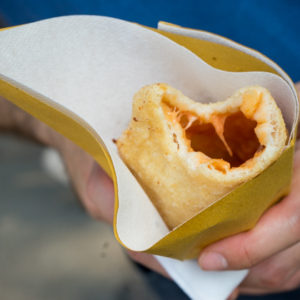
Lamb by Simone & Pino Berettoni
You may not have noticed but it’s lamb season. We are in Abruzzo on a farm this week on holiday. The baby lambs are being born every day. Infact even between breakfast and lunch, several new little faces joined the flock. Spindly-legged baby lambs are stumbling around their pen learning to walk literally within minutes of being born. (I remember feeling this was deeply unjust after watching this on television after having my first son. We hadn’t slept for weeks and waited 13 months for him to walk.) Accordingly there is lamb on the menu everywhere, roasted or grilled from abbacchio al forno and abbacchio scottadito (grilled lamb) in Lazio to arrosticini (grilled skewered lamb) in Abruzzo.

Maialino di latte al forno con pelle croccante (roast suckling pig with crackling)
There are also baby piglets on the farm from revered black pigs. Roast suckling pig is one of the great joys in life. If suckling pig is not available to you, this recipe from Basilicata produces a succulent pork roast rolled around a stuffing made of garlic, parsley, pancetta, pecorino cheese, chilli and nutmeg. The roast is then braised in white wine and tomatoes until a beautifully golden and crispy crust develops and the meat can be cut with a butter knife. The juices are used to dress pasta (preferably a larger type of orecchiette, cavatelli or strascinati) which is served as a first course. The roast itself is then sliced and served with vegetables as a main course.

Cavatelli con ragù alla potentina
Nothing brings a family together like a roast for lunch. The oven heats the home, adding to the cozy feeling or hygge to borrow from the current trend. This roast pork dish is for a day when one wants to keep friends and family near and the elements outside at bay. A steaming roast emerging from a fiery oven neutralizes the cold and damp outside.
Ragù alla Potentina (roast pork stuffed with pecorino, garlic and pancetta) – Basilicata
To see illustrated step-by-step instructions, please click here.
1 recipe fresh cavatelli, strascinati or orecchiette or 450 grams dried orecchiette or short pasta
1.1 kilos pork belly joint, the skin scored every 2 cm
80 grams Pecorino cheese, crumbled or coarsely grated
75 grams flat leaf parsley, leaves rinsed, dried and finely chopped
pinch nutmeg
pinch chilli powder
2 garlic cloves, skin removed and finely chopped
60 grams sliced pancetta (about 4 slices)
50 mls (3 tablespoons) extra-virgin olive oil or lard
240 mls (1 cup) white wine
1 kilo tomatoes, skin and seeds removed and coarsely chopped
Sea salt to taste
Black pepper, freshly ground
Mix together the pecorino, parsley, nutmeg, chilli and garlic with some salt and pepper. Rub salt into the pork skin, ensuring to get the salt inside the scored parts. Unroll the pork belly joint, skin side down. Spread the pecorino mixture evenly across the top. Cover with the pancetta slices. Roll the belly closed again and tie tightly with some string.
Heat the oil or lard in a Dutch oven over high heat. Place the roll in the hot oil skin side down. Keep turning every 5 minutes until golden brown all over, about 20 minutes in total. Keeping the roll seam side down, add the white wine to the pan and allow about 2/3rds of it to evaporate. Add the tomatoes to the pan. You have a few options on how to cook this, the first is to cover it with a lid and cook for 2 hours on low heat. The second is to roast it in an oven set at 180C for 2 1/2 hours. The third is to cook it in a pressure cooker for an hour.
When the roast is cooked, set aside and keep warm. Bring a large pot of salted water to boil for your pasta. If you used a pressure cooker, you may want to reduce the sauce in a saucepan for 20 to 30 minutes until slightly thicker. Otherwise, boil your pasta until it floats (if using dried pasta then boil for the time indicated on the packaging. Drain the pasta when cooked, toss with the sauce and serve as your first course. Slice the roast and serve as your main course.






Does pork belly go under another name???? The recipe sounds wonderful but I am not sure of how to obtain the pork in Miami when we return home…
Hi Lisa, in the US most of the pork bellies are made into bacon. Try asking a butcher (even the meat counter in the grocery store). I’ve seen it labelled as fresh bacon (uncured and unsmoked) before as well. A Chinese (五花肉) or Colombian grocery store (used for chiccharon) would have it too. I believe Cubans also use it to make sandwiches but I am not that well versed in South American food. Let me know if that works for you. It is so worth the time to find.
In Sarasota, Florida I found this product in COSTCO or Spanish Markets.
Thanks Anthony!